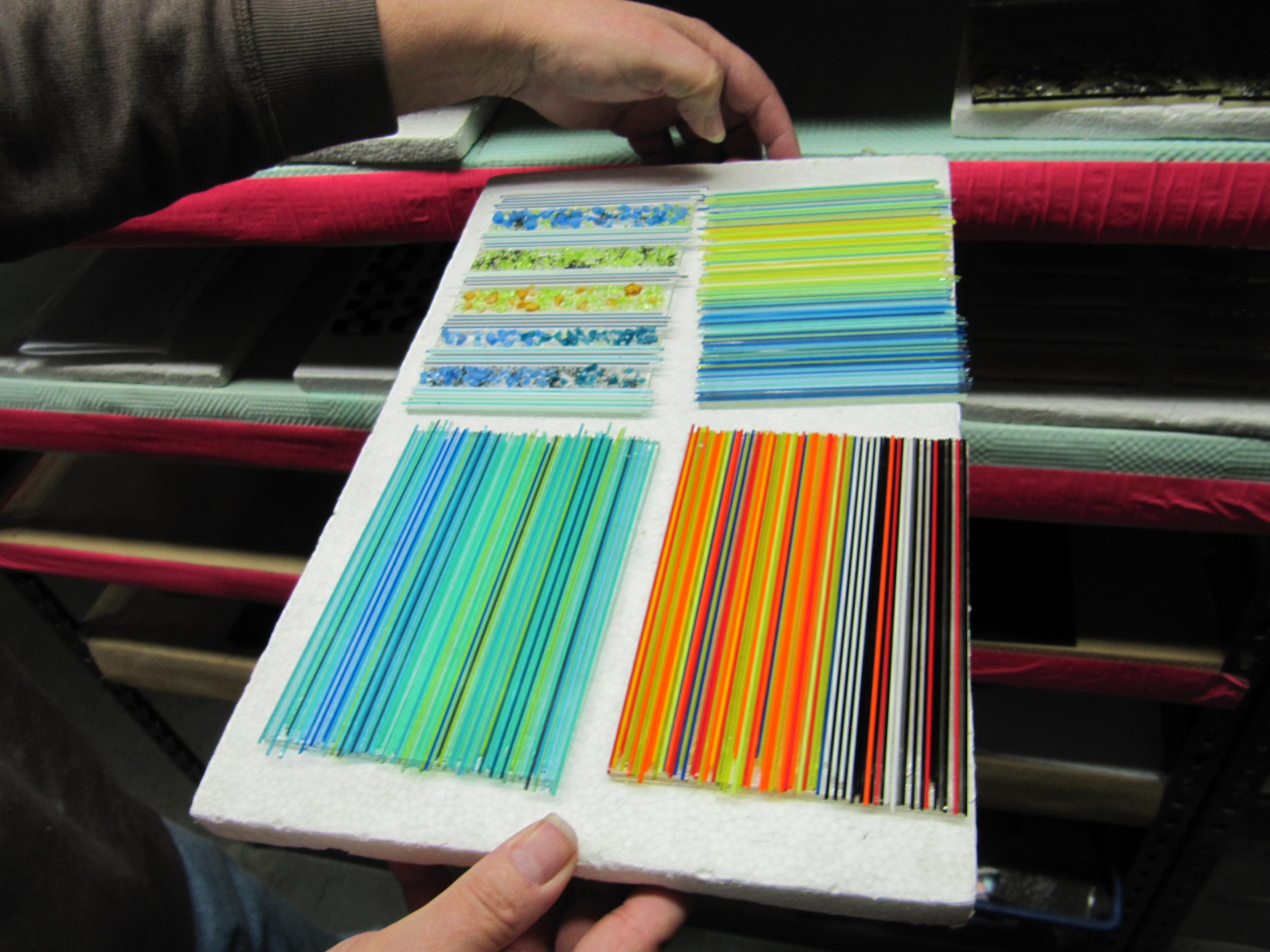
Glass samples show the range of colors Bullseye can produce. Cadmium is used to create yellows.
April Baer
Bullseye Glass, Southeast Portland’s globally renowned supplier of art and architectural glass, altered its production processes this week in response to concerns about the factory’s effect on local air quality.
Bullseye has passed Oregon Department of Environmental Quality tests twice in the past year but, nonetheless, last Wednesday The Portland Mercury broke the news that the state DEQ believed Bullseye was behind high levels of arsenic and cadmium in the air in Southeast Portland.

Colored frit, a raw material commonly used in glass-making, sits on a shelf at the Bullseye factory.
April Baer
ldquo;We understand the concerns and take public health and the environment seriously,” Bullseye Glass responded
. “That is why, upon being contacted by DEQ last week, we made a voluntary decision to suspend the use of cadmium and arsenic in our glass-making process.”
DEQ had reportedly been searching for three years for the source of cadmium and arsenic, which studies discovered at 49 and 159 times higher than is safe, respectively. David Farrer, a toxicologist at Oregon Health Authority, told OPB that these levels raise the cancer risk from one cancer case in a million people to one in 10,000 people.
Then, on Tuesday, Uroboros Glass in North Portland announced that it, too, would stop making glass that requires the use of cadmium. The announcement came after DEQ released a map showing that there were "hot spots" of pollution near both Bullseye and Uroboros.

Don Bietschek and Scott Curn, partners in Aquila Art Glass, and instructors at Aquila Glass School. Nearly all raw materials in their shop come from Bullseye.
April Baer / OPB
Take a listen to the sound file to hear EarthFix reporter Cassandra Profita's round-up of the details, and our conversation with two glass artists in north Portland who are among the thousands using Bullseye and Uroboros products in their practice.
We also hear about the Multnomah County Health Department open house at which hundreds of Portlanders expressed worry about the DEQ's findings. Of immediate concern to many was the health and safety of students at the five public schools located near the factory, but subsequent tests showed no evidence of cadmium or arsenic inside the schools.
Officials are investigating why the existing environmental standards are not properly controlling metals emissions and whether the recent findings can be linked to elevated rates of cancer in the area, OPB reported last week.
Keep an eye on OPB.org for more details, as they emerge. Even the campaigns are getting involved in the story. And Friday's news included the revelation of a third heavy metal attributed to glass production.